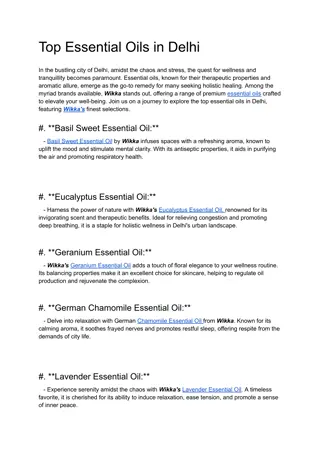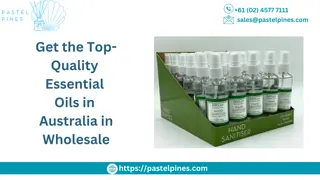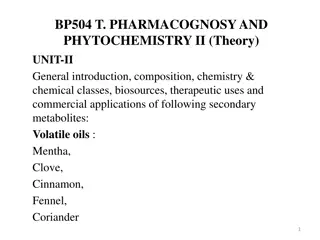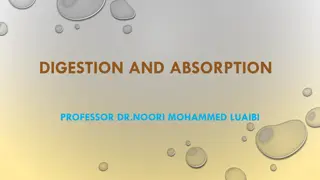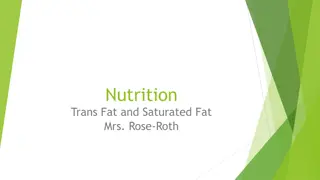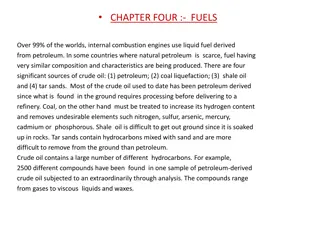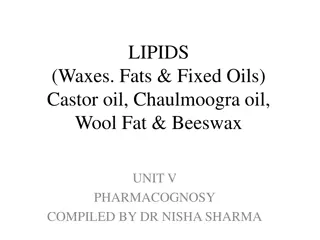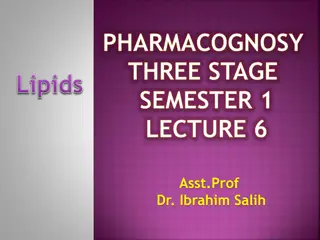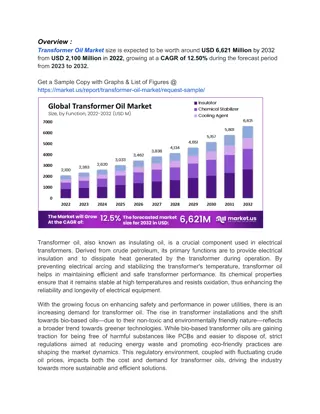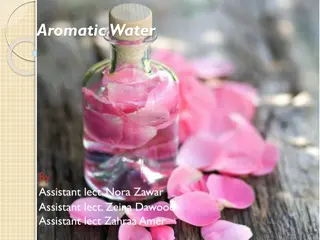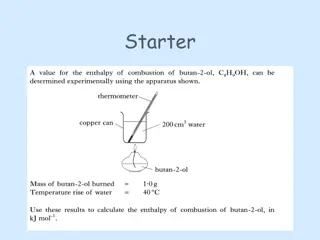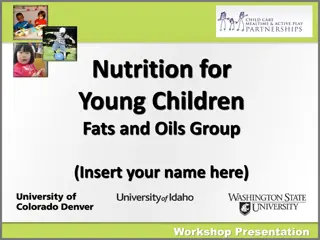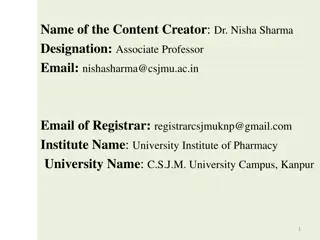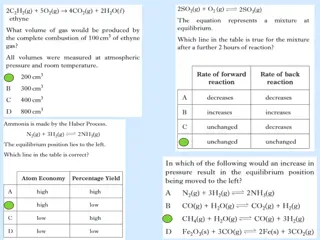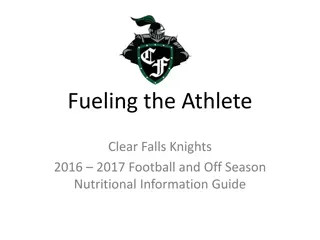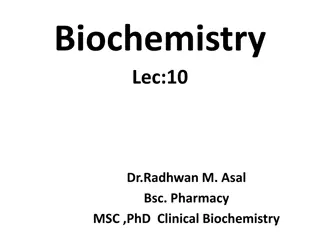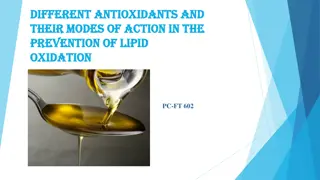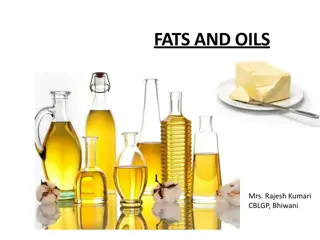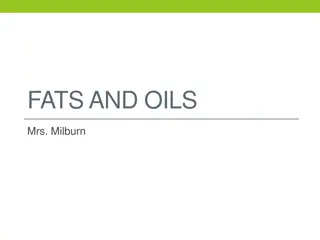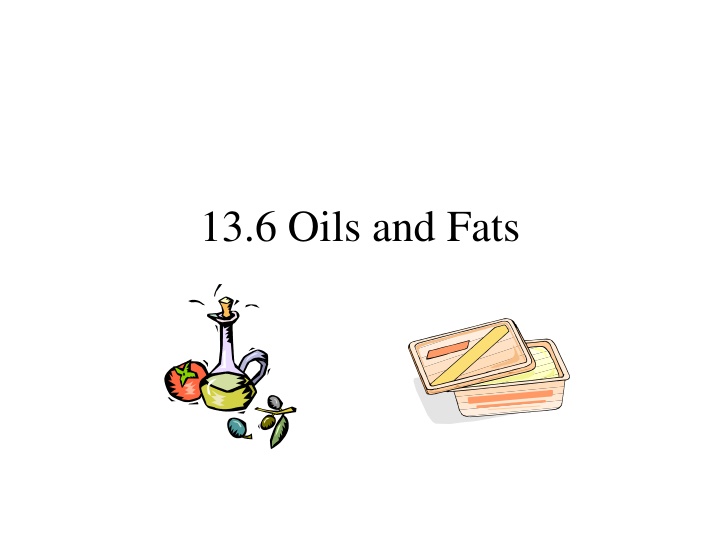
Oils, Fats, and Triglycerides in Chemistry
Explore the chemical structures and properties of oils, fats, and triglycerides in living organisms. Learn about common fatty acids, types of triesters, and the conversion of oil to fat through processes like hydrogenation. Uncover the differences between solid and liquid fats, and discover how natural oils are processed for various uses.
Download Presentation

Please find below an Image/Link to download the presentation.
The content on the website is provided AS IS for your information and personal use only. It may not be sold, licensed, or shared on other websites without obtaining consent from the author. If you encounter any issues during the download, it is possible that the publisher has removed the file from their server.
You are allowed to download the files provided on this website for personal or commercial use, subject to the condition that they are used lawfully. All files are the property of their respective owners.
The content on the website is provided AS IS for your information and personal use only. It may not be sold, licensed, or shared on other websites without obtaining consent from the author.
E N D
Presentation Transcript
Chemical structure. Oils and fats important for storing chemical energy in living things. Oils are liquids fats are solids. Made from esters of propane-1,2,3,triol (glycerol) + long chain carboxylic acids RCOOH. H H-C-O-H H-C-O-H H-C-O-H H Propane-1,2,3-triol O H-O-C-(CH2)14CH3 palmitic acid
Types of triesters Triesters (triglycerides) 3 carboxylic acids react with triol. Mixed triesters three acid groups, not all alike often found in natural oils and fats. H H-C-O-R H-C-O-R H-C-O-R H
Fats and fatty acids. Unbranched hydrocarbon chains. Called fatty acids occur in fats!!! Fully unsaturated / 3 or 4 double bonds. Still known by old names systematic names too long. Thought to cause blockage of blood vessels and heart disease, especially the saturated ones.
Fat facts! Natural oils and fats are mixtures of triesters. Can be split up by hydrolysis, heat with conc. NaOH. Triester + NaOH glycerol + sodium salt of acid Basis of soap manufacture eg. Palmolive Convert sodium salts to free acids by adding dil. HCl or other mineral acid.
Solid or...? Fatty acids present in mixture affect the properties. Saturated triglycerides pack closely together. Attractive forces - higher melting point.
or Liquid? Unsaturated triglyceride molecules cannot pack closely together because of cis double bonds - causes kinks! Intermolecular forces are weaker. Less energy needed to separate molecules - lower melting point.
Converting oil to fat. Fat free milk Hydroge n Refiner Hydrogenation Blender Emulsifier Oil mixture Margarine Catalyst Flavouring s etc. Processes involved Chemicals involved Most natural oils need processing to make them fit for use. Hydrogenation of unsaturated oils - make margarine. Controlled hydrogenation makes oils more solid. Pass H2through heated oil - nickel catalyst. Add flavourings, salt, vitamins etc.
This powerpoint was kindly donated to www.worldofteaching.com http://www.worldofteaching.com is home to over a thousand powerpoints submitted by teachers. This is a completely free site and requires no registration. Please visit and I hope it will help in your teaching.

